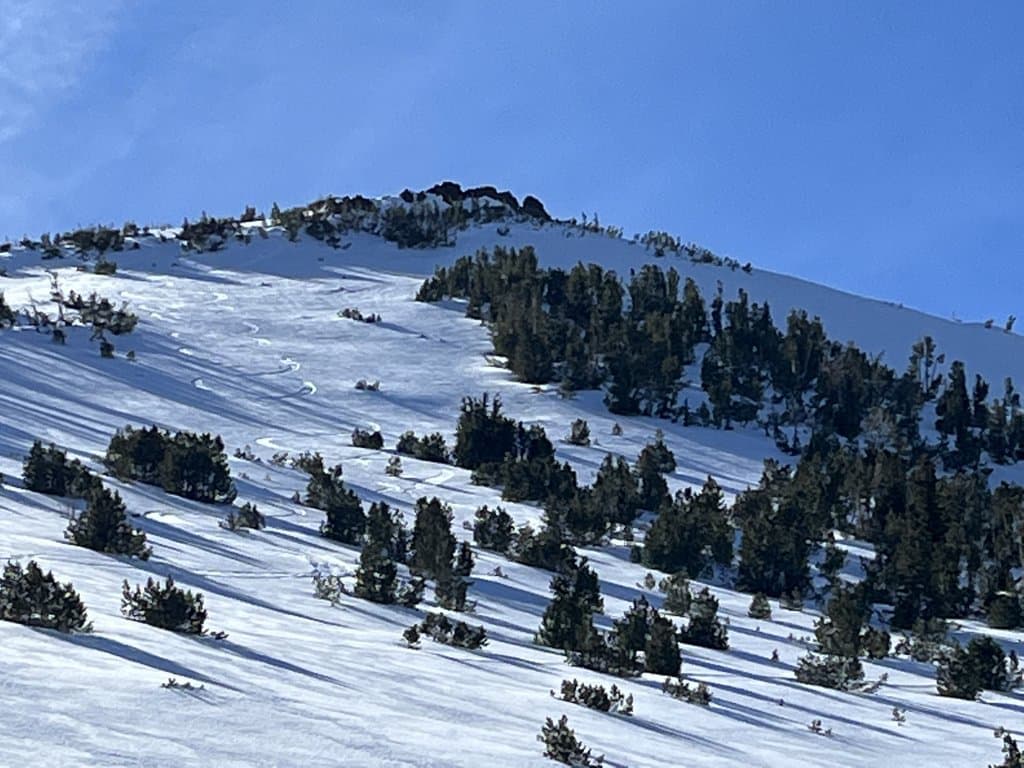
Report from November 15, 2021, and written by Mark Speicher with Blackbird Mountain Guides
Fellow Blackbird Mountain Guide Sarah Newsome and I ventured up Red Lake Peak in the Carson Pass area in the South Lake Tahoe backcountry yesterday (2021-11-15). Based on the lack of tracks near the summit, it didn’t appear many people had been up there since the previous snow.
Since the storm passed last week, the weather has been warm and without a significant refreeze at night. There have been nightly temperature inversions with cold air in the valleys and warm air at the summits. The best way to track inversions is to use remote telemetry on Sierra Avalanche Center’s site.
We were curious what this weather did to the snowpack. We were looking for spring conditions and melt-freeze snow to compliment the warm weather.
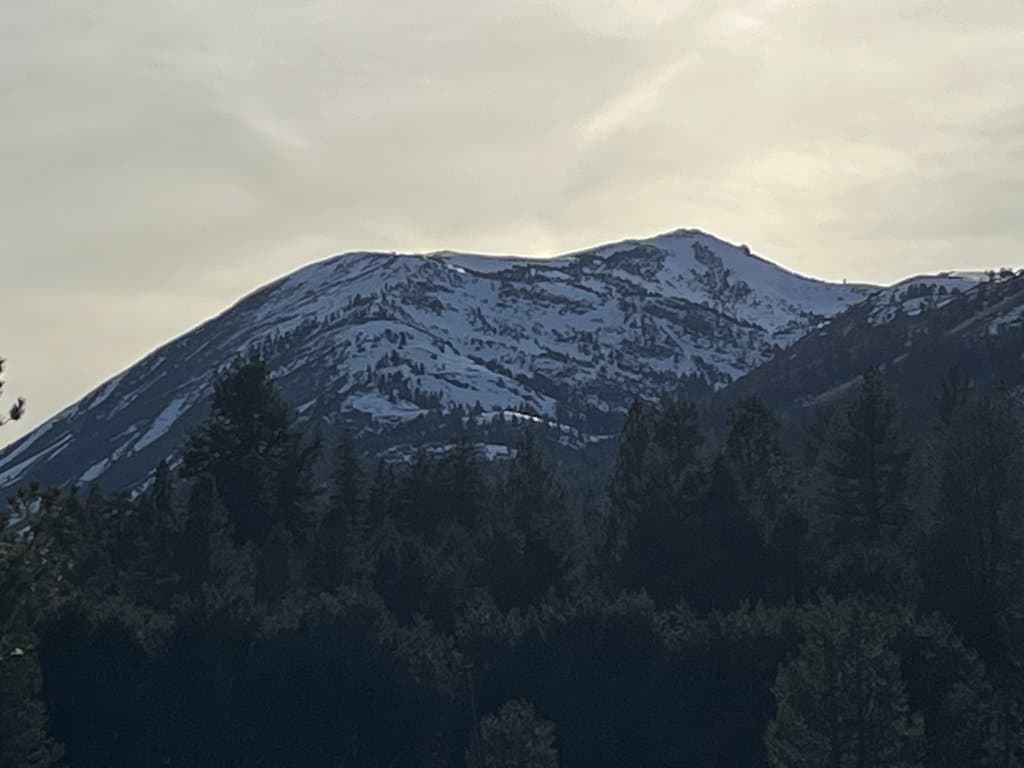
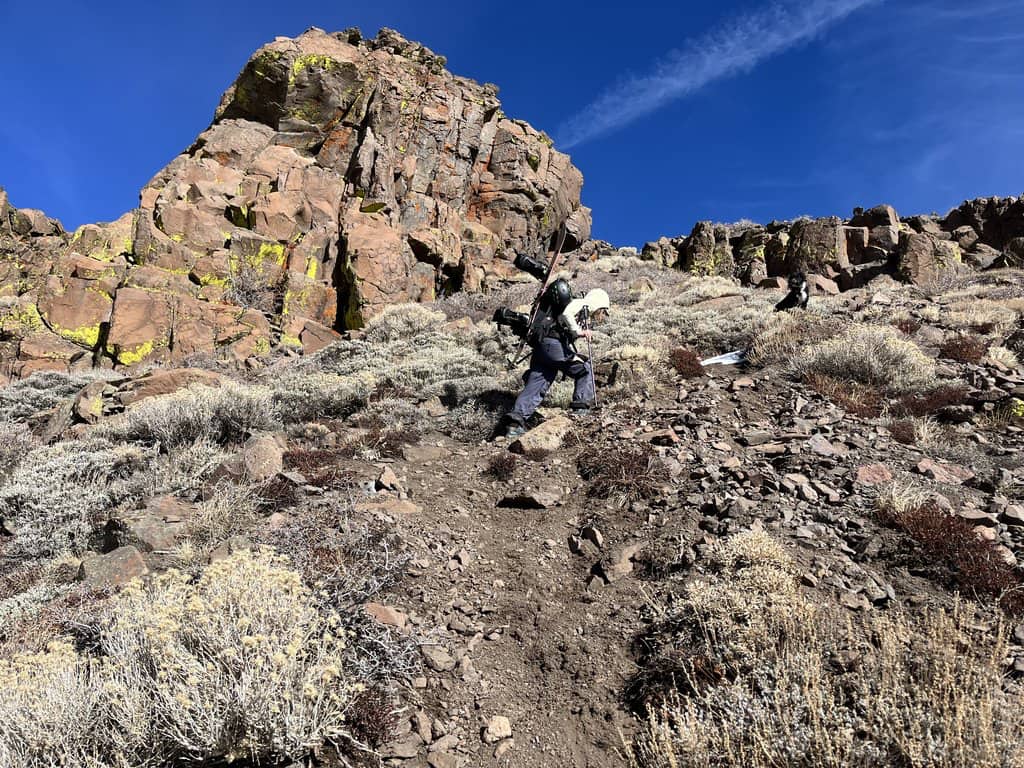
The entire hike to the top was on dry land. My partner wore tennis shoes anticipating the long walk both in and out. South faces were melted to dirt. The West and East faces had supportable melt-freeze crusts. Our target snow surface was a softened melt-freeze layer on sun-exposed aspects, but conditions are difficult to read based on the fact that it’s November! The sun is high in the sky and daytime temps are still in the 50s, so cold, winter snow is hard to find.
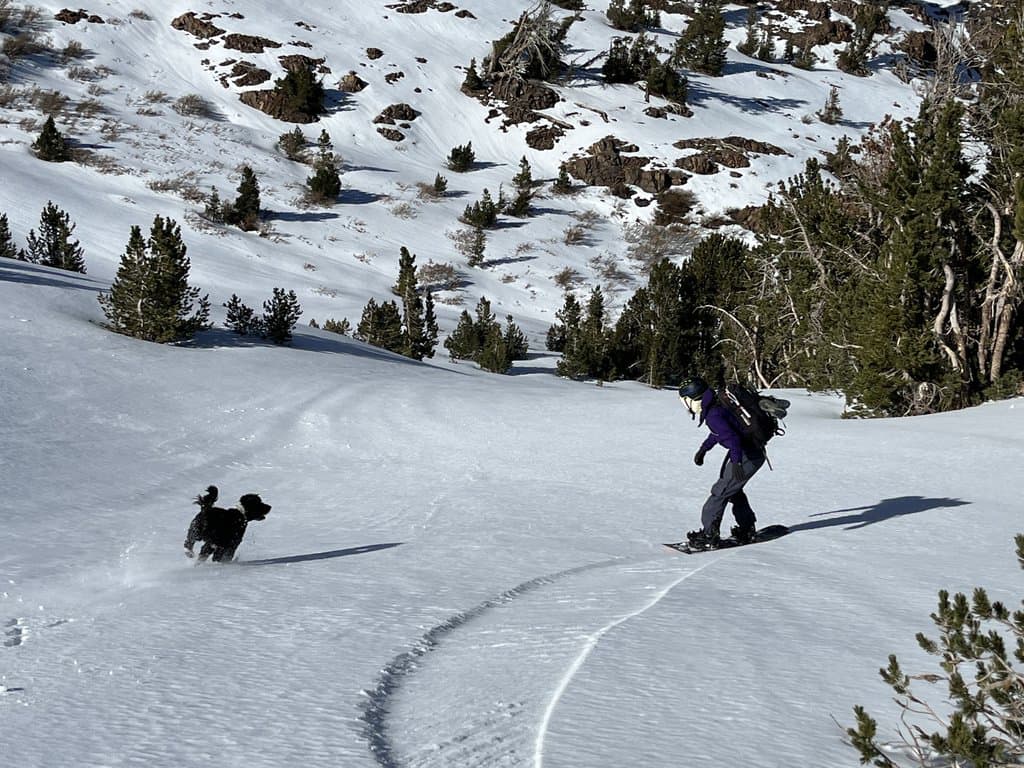
One of the important considerations we discussed was making sure the slope we chose would be safe to ride. We considered the risk of avalanche, low tide conditions (thin snowpack with lots of rocks and tree limbs hiding just under the surface), and firm slopes that might be hard to edge on and arrest a fall if one occurred.
Ski Conditions change on the North Side
We felt good above the coverage and avalanche hazard based on observations we made on the ascent, but our biggest unknown was snow quality. After we transitioned on the summit, it took one turn to realize that there was a breakable crust on all of the north aspects. This type of snow is not very safe nor fun, especially during the early season when thin snow coverage can result in hitting lightly covered rocks. The snow under this crust is starting to facet. This doesn’t cause an avalanche hazard for us on this day, but something to watch for in the future
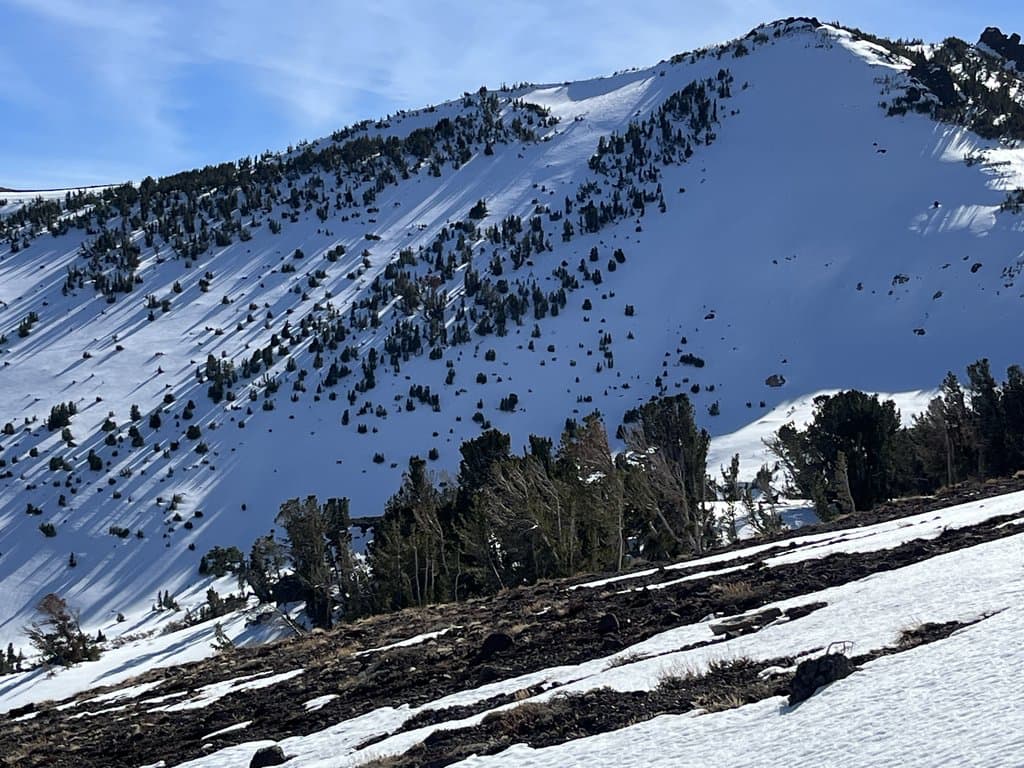
As we got lower in the terrain, we found pockets of consistent, sun-warmed spring snow that we were shooting for. As you can see in the picture below, we hugged the tree line to find the snow that had transitioned thoroughly and was holding supportable snow with a soft surface layer.
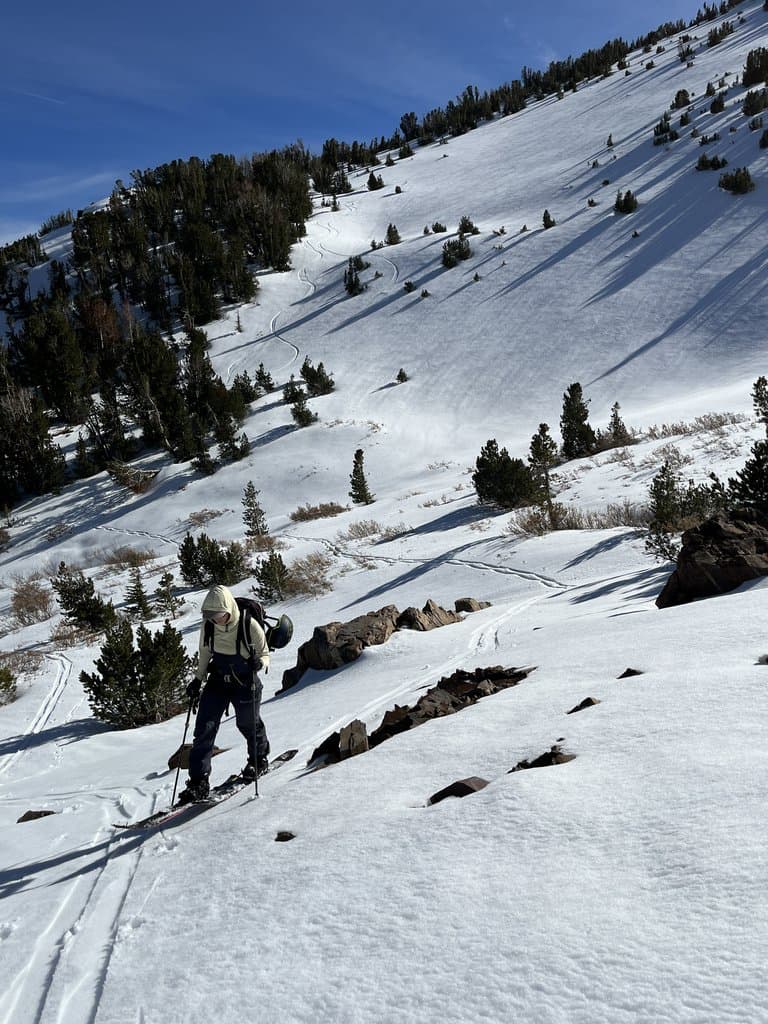
Shortly after skiing the top pitch, I hit a rock and took a solid digger. This was a reminder that shallow snow coverage was our biggest hazard of the day. There are plenty of “snow sharks” (rocks hidden just below the snow’s surface) that can core-shot your board or make you crash. Luckily, I fell into deep snow, but a fall like that in a “no fall zone” would have been serious.
The normal exit from our line back to the trailhead was not passable due to a lack of snow. I got cliffed out looking for a line through and had to retreat the way I came to find another exit.
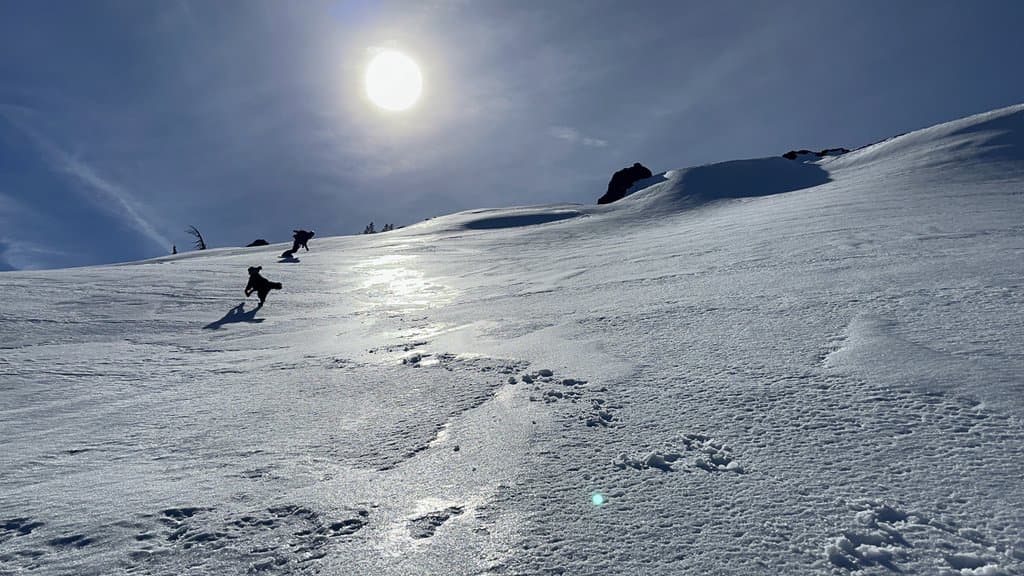
On this alternate exit, we found more variable snow conditions with some great, sun-warmed spring-like snow and some firm and slick “slide for life” type surfaces. This was our best exit, so we had no choice but to ride it. The snow ended at 8,900ft, we had to walk about a half-mile to Crater lake. Loose rock became another reminder that early season conditions have increased mountain movement. Backcountry travelers should be conscious of warming temperatures and their effect on the terrain.
Lesson for the day: early season missions are hard on gear and tough on the body. Lots of dirt walking to reach snow, variable conditions, and shallow snowpack are all a big part of the game this time of year. Splitboarding on Red Lake Peak was a humbling reminder that the mountains can always provide the challenge you seek. The question is… how far are you willing to walk on dirt for your next challenge?
You can find some of the observations we made on this tour at the Sierra Avalanche Center website.
See my previous Trip Report from the South Lake Tahoe Backcountry: South Lake Tahoe, CA Backcountry Trip Report: Assessing Snowpack and Skiing in Elephant’s Back East Bowl